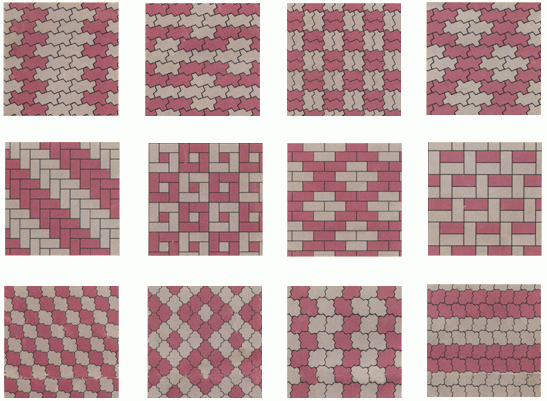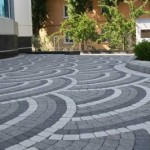Hundreds of years ago, people began to use stone for the construction of roads, which in the twentieth century was almost everywhere replaced by asphalt and concrete, but paving slabs, which, in fact, are a modern version of paving stones, are currently extremely popular in landscaping. Successfully selected layout of paving slabs can transform the yard, street, garden, and is one of the most powerful tools for creating landscape design.
Paving Type Selection
Depending on the material, distinguish:
- Paving stones – small-sized products from natural rocks, characterized by strength and durability. It is used in places of increased load on coatings: near garages, in places of traffic.
- Paving slabs are made of concrete, polymers and other artificial components. Its cost depends on the thickness of the products, which can be different. It is used for paving footpaths.
- Paving slabs under the cobblestones are an artificial material similar in its properties to natural stone.
Layout options – unlimited design decisions sites
The most common tile combinations include products in two colors, sometimes four. This is quite enough to give the sites and paths a very picturesque and original look.
The most popular patterns for laying paving slabs:
- The square diagram is the arrangement of paving elements relative to each other in rows;
- Chess order – the location of the middle of the tiles above the junction of the elements of the previous row;
- Herringbone laying – laying out products at an angle of 45 or 90 degrees;
- Braiding – a herringbone variation resembling a weave, which is achieved by alternating transverse and longitudinal paving;
- Chaotic pattern – layout of paving stones or tiles of various sizes and colors in random order, which, when successfully selected, creates an interesting effect, which looks especially original when choosing the “hexagon” shape;
- Circular pattern – a radial pattern of wedge-shaped elements;
- Continuous scheme – laying tiles with some offset of each next row;
- Drawings by templates are created according to design sketches and can be very different, as far as the author’s imagination allows;
- Tiling small flower beds or parts of the lawn is an original landscape solution.

When choosing any scheme, laying diagonally helps to reduce noise when driving vehicles. It is not always advisable to strive for intricate paving patterns – the simpler the pattern, the easier it is to perform it qualitatively. Laying options for paving pavers and other types of coverings should be selected according to the general concept and style of decoration of the main building – the adjacent area should be its logical continuation.
A variety of types of modern paving tiles
There are simple and curly elements of paving. The first option allows you to create both concise and extremely intricate compositions. When arranging curly tiles, certain special skills are required, since an error in the performance of work can spoil the entire effect of the coating.
In many ways, the layout of paving slabs depends on the color and shape of the products used:
- “Brick” – the simplest and most universal configuration of elements, simple to operate;
- “Wave”, as a rule, is used for paving large enough areas, has excellent drainage properties;
- “Coil” has a unique effect of self-tightening – when applied on different soils of different types of laying, the tiles do not diverge;
- “Clover” is distinguished by its intricate shape and, accordingly, the process of performing paving is more difficult for it, but the result of its use is unsurpassed;
- “Rhombus”, having straight straight edges, ensures the most tight fit of the elements, which is important to improve the performance of the coating in places of heavy traffic;
- The “Old City” includes tiles of 4 different sizes in a set of tiles, which makes it possible to imitate an old pavement using styling in a chaotic pattern.
In addition to the listed forms of tiles, it can be more complex (“double T”, “chamomile”, “trapezoid” and others), and you can also order or make yourself paving elements of absolutely any, most intricate, configurations.
Different forms of elements, such as “square” and “violet”, as well as various patterns of paving require different consumption of material. This must be taken into account when calculating tile consumption before purchasing it.
